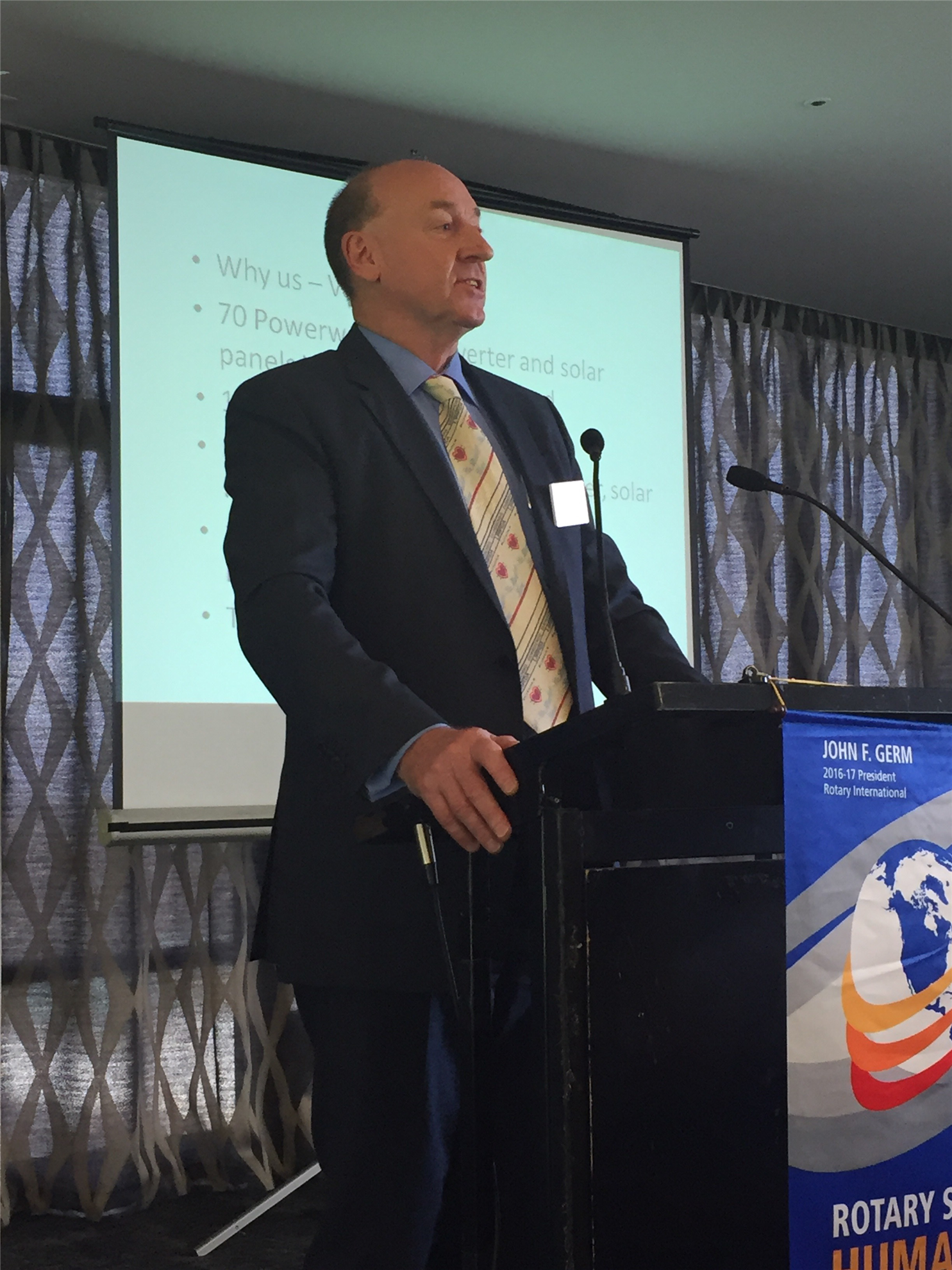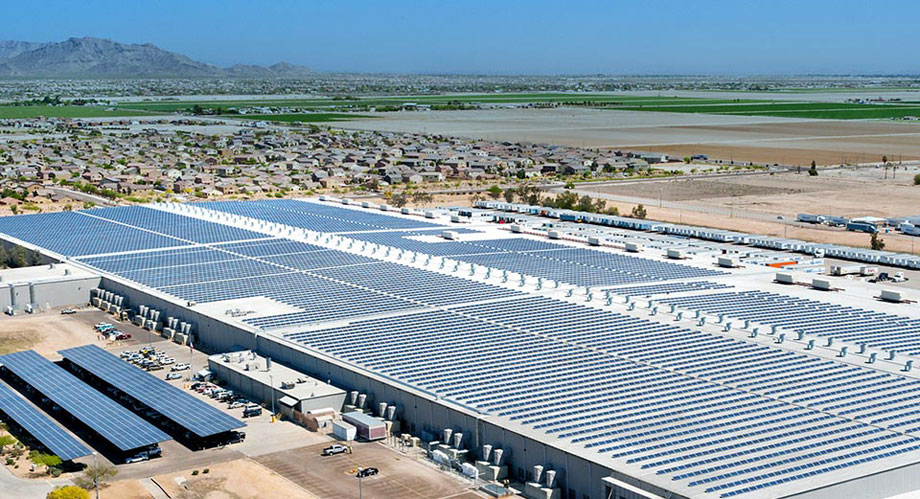James Carmichael
 Our keynote address was given to us by RCON member James Carmichael.
Our keynote address was given to us by RCON member James Carmichael.James has been involved in power companies for his working career is a Trustee of Entrust (formerly the Auckland Electricity Consumer Trust) and sits currently on the board of Vector.
In that capacity, he visited Tesla in July 2016 as well as Uber's head offices .
Vector is Tesla's largest foreign customer.

 Vector is currently installing Powerwalls (4kw batteries) with an inverter and solar cells. Vector is just completing a 1Mw /2Mw grid scale battery in Glen Innes which will result in a savings of approximately $5 million per year. These installations will enable considerable savings in the storage and transmission of electrical power throughout NZ. James commented that the likley fate of the south island Hydro lakes is to become irrigation storage lakes as the powerwall technology will make them somewhat redundant.
Vector is currently installing Powerwalls (4kw batteries) with an inverter and solar cells. Vector is just completing a 1Mw /2Mw grid scale battery in Glen Innes which will result in a savings of approximately $5 million per year. These installations will enable considerable savings in the storage and transmission of electrical power throughout NZ. James commented that the likley fate of the south island Hydro lakes is to become irrigation storage lakes as the powerwall technology will make them somewhat redundant.James gave us some background on Elon Musk the owner of Tesla. He owns owns Space X, Solar City and Tesla, all which are diverse tech orientated companies Interestingly none of them have made profits relying instead on subsidies and other forms of support. Musk is however a thought leader and in particular his efforts with Tesla have forced other car makers to sit up and take notice. Many of hte major brands are grabbing electric technology and putting it into their cars so we will in the next few years be in for a sea change in the car industry as petroleum using engines give way to electricity based. Whether Tesla survives the likely onslaught of the major brands, only time will tell. They have the economies of scale whereas, at the moment he doesn't.
James told us that Tesla is building its cars in an old Toyota factory bought for pennies on the dollar. The car is unique in that it is mostly manufactured in the factory. James told us that Tesla has a big challenge as it has presold the Model 3 for $35,000 USD has 300000 presales with $1000 deposit. There will need to be a massive ramp up in capacity in the next 18 months to meet this demand. as yet it does not have the manufacturing base which could be it's achilles heel.
James told us about solar city. Which is a battery manufacturing plant built to supply tesla's power needs.. The battery plant is designed to produce 50 GW per year and is currently running at about third capacity. Musk has already announced plans to double the capacity to 100Mw. The plant builds car batteries from many small Panasonic batteries connected in series and parallel. What they are doing is very interesting and will be the focus of intense scrutiny from everyone to see if it all works.
James explained that utilities have been hostile to solar power. However, we only use 35% of power generated as the excess is needed to meet peak demand. Batteries help level this out and can result in large savings which will benefit everyone. Especially as R&D is focussed on battery power significant advances will be made to remove ourselfs from reliance on fossil fuel.
James commented that although Tesla is designed using open source platforms there was no possibility of taking pictures inside the plants.
James also mentioned his visit to Ubers head office. Full of bright young things with a sprinkling of oldies (people in their '30s). Lots of bright ideas ricochet around the building, including uberising parcel delivery which is a concept which made your editor sit up and take notice.
A great address from James showcasing the talent that we have in the club.
